In this article, I will review 6 essential books for landscape design. Each book listed below can serve as a valuable resource to develop the requisite skills to become a better landscape architect or designer. The books listed are my personal favorites and have assisted me in my continued journey to become a better designer. I have also included several honorable mentions in each category that the reader might find helpful as well.
When someone is first interested in landscape architecture, it is easy to get lost in the wealth of books, videos, and software available throughout the industry. Eventually, the question will undoubtedly arise, “Which book would help me become a better designer?”
Although this is a very basic question, it is a very difficult one to answer – most people have their personal favorites or ones that they were previously recommended when they started. But the real difficulty isn’t with personal choice, but rather due to the extensive nature of our industry.
To first answer the question of which book would help someone become a better landscape architect, you first need to answer the question: “what characteristics make a good designer in the first place?”
I believe a good landscape architect or designer must have these important characteristics: (1) Ability to construct functional and well-engineered spaces, (2) Have proficiency in conceptual design and spatial reasoning (3) Possess extensive horticultural and environmental systems knowledge, (4) Retain the technical skills to represent designs through traditional or digital means, (5) Understanding of the relationship between humans and their environment,(6) Consider the cultural and socioeconomic influences that exist within and between landscapes.
I hope the books listed below serve as a valuable list for future reference for those interested in the design profession. I believe they are each essential to becoming a better landscape designer.
Category 1: Professional Resource (Ability to construct functional and well-engineered spaces)
Top Choice: Time Saver Standards for Landscape Architecture, Charles Harris & Nicholas Dines
The Time Saver Standards is a benchmark within the profession for providing excellent content on a wide variety of topics including land planning, construction documentation, material details, and more. It is a reference that I often reach for repeatedly. Most already within the profession probably own this book.
The book is structured around key elements within the design field for almost any site condition or design feature imaginable. It has relevance for both large-scale environmental planning purposes as well as small residential construction projects. Click this link to view current availability online.
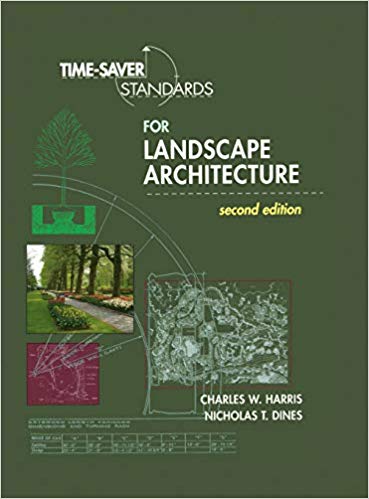
Pros: The content is well detailed, clearly organized, and can easily be adapted to fit a designer’s individual needs.
Cons: The biggest disadvantage is its potential shelf-life. As construction techniques evolve and building practices change, newer editions will need to be purchased for the most updated information
It should be noted that there are also additional books that offer similar content for the new or experienced Landscape Architect. All three Honorable Mentions below are extremely valuable for understanding the breadth and complexity of our profession.
Honorable Mentions
Landscape Architectural Graphic Standards by Leonard Hopper
Landscape Architecture Portable Handbook by Nicholas T. Dines
Constructing Landscape by Astrid Zimmermann
Category 2: Design Resource (Have proficiency in conceptual design and spatial reasoning)
Top Choice: Architecture: Form, Space, and Order by Francis Ching
I am sure many would be surprised to see an architectural book as the top recommendation in a landscape design article, but I feel this is more than appropriate. I often tell my students that design is the integration of an aesthetic taste within a functional purpose, regardless of which material or design industry you are practicing.
The book contains a wealth of excellent studies on establishing, organizing, and synthesizing forms. It utilizes images throughout the text consistently and understandably. I particularly liked the chapters on scale and proportion, as I have found that this is a weak area for many landscape architects. Click this link to see current availability of this book.
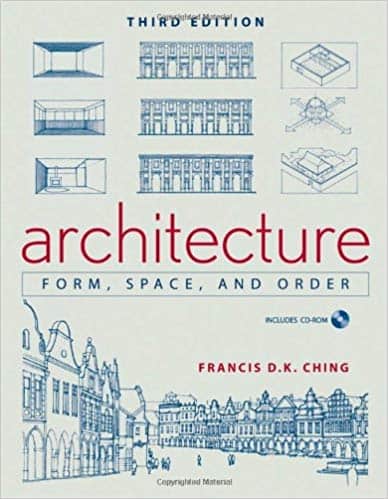
Pros: Ching’s work set’s itself apart compared to other similar titles within related design industries. Its in-depth investigation of form creation is unrivaled.
Cons: The obvious and largest negative would have to be applicability. It is undoubtedly an architectural textbook, not a landscape design one. You will need to make your own correlations between the information and the landscape field.
In recent years, there have been several valuable design books being published in landscape architecture and design. I have noticed that I often reference Booth’s “Foundations of Landscape Architecture” in my design class because of its useful diagrams and simplistic explanations.
Both works are worth checking out if conceptual design and form-creation are of interest to you as a designer.
Honorable Mentions
Foundations of Landscape Architecture by Norman Booth
Form and Fabric in Landscape Architecture by Catherine Dee
Design Thinking by Peter Rowe
Category 3: Horticultural Resource (Possess extensive horticultural and environmental systems knowledge)
Top Choice: Manual of Woody Landscape Plants by Michael Dirr
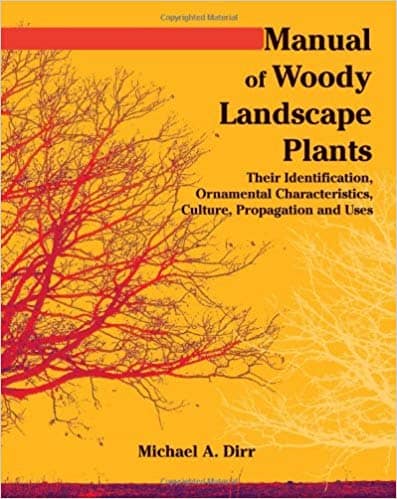
Often simply referred to as the “Dirr Manual”, this book is the essential tome of ornamental horticulture and should be a required reference for any designer that specifies plant material. Although the text has been readapted several times into new digital or user-friendly guides, the original thousand-page textbook from Stipes Publishing remains a classic.
Dirr provides information for designers to assist with the identification of common woody plant material but also supplies important content on cultural requirements, propagation strategies, and of course aesthetic features. He also reviews notable cultivars and provides anecdotes on his own experiences with each plant. Click this link for availability online.
Pros: The wealth of valuable ornamental identification characteristics along with cultural information is unmatched within the industry. It is an encyclopedia of information. I often tell students that if you retain only a mere 10% of the information it contains, you will still probably never cross paths with a plant you can’t identify.
Cons: The manual is primarily text-based and does not provide many images. For a non-professional whose sole purpose is to simply identify woody plant material, a standard field-guide would be a better option.
A similar book listed below in the honorable mentions, Manual for Herbaceous Ornamental Plants by Stephen Still, is comparable to Dirr’s Manual in its organization but is focused only on Herbaceous Plants. For garden designers, or those looking for a better understanding of tender perennials, it is worth reviewing.
The other honorable mentions listed below are not reference texts but rather helpful in thinking more strategically about the ecological relationships inherent throughout designed and natural landscapes. Both McHarg and Tallamy provide detailed discussions on the complex systems within landscapes and the actions designers can take to remain sensitive to them.
Honorable Mentions
Design With Nature by Ian McHarg
Bringing Nature Home, Douglas Tallamy
Manual of Herbaceous Ornamental Plants by Stephen Still
Silent Spring by Rachel Carson
Category 4: Graphics Resource (Retain the technical skills to represent designs through traditional or digital means)
Top Choice: Landscape Graphics by Grant Reid
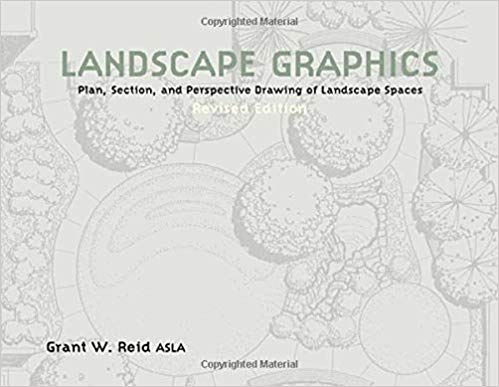
To use a horticultural analogy, if this website and associated videos are a tree, Landscape Graphics by Reid are its roots. Reid sets out an ambitious goal to create a practical reference for drafting landscapes by hand. He starts with the very basics (lettering, hand position, equipment) and progresses to larger complex drawing styles (section and perspective).
I also find this book extremely useful because of its applicability to both large scale and small scale designs. I have referenced this book for landscape architects working on city park developments as well as residential garden designers and both have found value in its content. Click this link for availability online.
Pros: The book is well organized and easily adaptable for all landscape design applications.
Cons: The obvious negative for this text is the reliance on traditional drafting methods for representing landscapes. With the prolific use of computer design programs in both landscape architecture and garden design, the book is (sadly) losing some of its relevance.
Honorable Mentions
Design Drawing by Francis Ching
Drawing the Landscape by Chip Sullivan
Digital Drawing for Landscape Architecture by Bradley Cantrell
Category 5: Behavioral Resource (Understand the relationship and interactions between humans and their environment)
Top Choice: Social Life of Small Urban Spaces by William H. Whyte
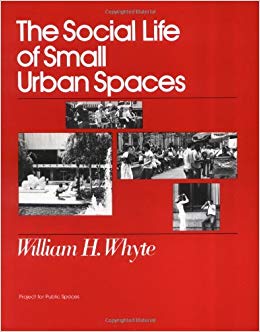
It is always important to construct safe and sustainable landscapes, but the landscape architect must also take into consideration the factors which influence a person’s relationship to space and others. This idea is often spoken about with the term “placemaking” – creating livable spaces for suited people’s behavior.
William H. Whyte and his team of social scientists provide a fabulous overview of the elemental factors that affect how people use outdoor spaces. In the text, he described his conclusions from conducting behavioral analysis within numerous public spaces in Manhattan.
In the text, Whyte observes individual and group interactions within outdoor built environments. He reviews people’s preferences within space (where they sit, what they do, how long they stay) and synthesizes the information into useful design recommendations for landscape architects and planners. This is done on both an individual and a group scale. Click this link for current availability online.
Pros: This is an analytical review of social interactions within outdoor space taken from real observed conditions over a large time scale. It provides good content to consider when designing for a specific clientele. There is also an accompanying video that presents the activities and preferences Whyte describes.
Cons: The original study is fairly outdated. With the rise of the digital environment and wireless connectivity, the way people communicate and interact with one another has drastically changed – it is safe to assume how we use our environment has changed also.
For the honorable mentions, I referenced three texts that have value when designing for group interaction. When I was completing my undergraduate work, the “Hidden Dimension” by Hall was required reading. His explanations of cultural “proxemics” and their associated impacts on design were eye-opening.
Honorable Mentions
Hidden Dimension by Edward T. Hall
With People in Mind: Design and Management of Everyday Nature by Rachel Kaplan
Gardens Are For People by Thomas Church
Category 6: Cultural Resource (Engage with the cultural and socioeconomic influences that exist within and between landscapes)
Top Choice: The Death and Life of Great American Cities by Jane Jacobs
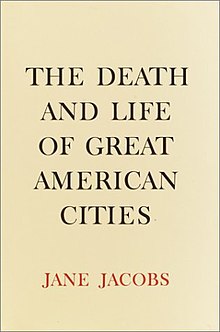
If you were to walk into any municipal city planner’s office and look at their bookshelf, I guarantee among the texts of zoning codes, ordinances, and planning documents rest Jane Jacobs essential text “The Death and Life of Great American Cities”.
Jacobs was a journalist working for Architectural Forum magazine when she investigated the unintended consequences of top-down urban revitalization within neighborhoods in Manhattan. Her findings and criticisms of modern planning were revolutionary and changed the way city planners perceived neighborhoods.
Jacobs stressed the importance of “social capital” – a term she used to describe the interconnectivity of diverse groups within a small area. Today many cities celebrate “Jane Jacob Days” in which town planners will walk the city neighborhoods with residents to discuss her book and its relationship to their city’s structure.
I also note for students in my class that Jacobs had no formal training in architecture, planning, or landscape design. She did not even possess a college degree. Yet she had a shrewd sense of place-making and its relationship to a community within the built environment. She is an inspiration for all who feel they lack the credentials to make a real impact in our world. Click this link for availability online.
Pros: Jacob’s book is an exhaustive review of what makes a community. It pulls the curtain back and exposes the real issues that face neighborhoods and what makes cities thrive.
Cons: The text is more appropriate for urban planners than garden designers. It is also text-only which can be sometimes difficult for designers to translate into meaningful form-making decisions.
The honorable mentions list for this category is extremely difficult. Cultural landscape studies are an enormously complex and detailed subgroup of landscape architecture and design – it is impossible to only mention a few select texts. I selected each of the ones below based upon personal preference, I find myself consistently reaching for them.
Honorable Mentions
Landscapes: Selected Writings of J.B. Jackson
Illustrated History of Landscape Design by Elizabeth Boults
Delirious New York by Rem Koolhaas
Additional Reading Material
The study of landscape design does not need to be something solely looked upon as a professional endeavor. Some of the most popular and widely read books in our society have underlying themes that are directly linked to our environment.
Below, I listed additional other books that did not make any of the lists above, but I still find extremely valuable. They are also books that are much less technical than those mentioned above and can be enjoyable reading material at any time of year.
Devil In The White City by Erik Larson (link)
One Man’s Meat by E.B. White (link)
Savage Dreams by Rebecca Solnit (link)
Across An Inland Sea (link)
String Too Short To Be Saved by Donald Hall (link)
If you liked this article, please be sure to check out others in the Design Resources section of our website.
Legal Disclaimer: This site is owned and operated by Draftscapes. We are a participant in affiliate marketing programs, including Amazon Associates, designed to provide a means for sites to earn advertising fees by linking to participant vendors. Draftscapes is compensated for referring traffic and business. Recommendations of products or services on this site are not influenced through this affiliation.


